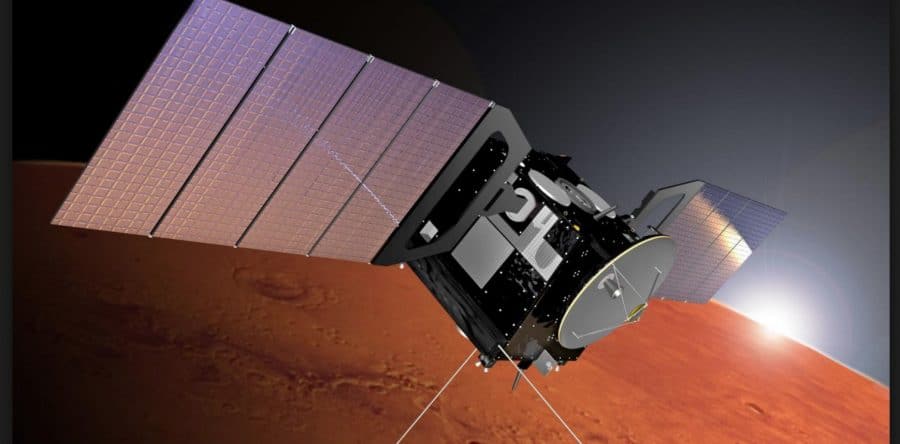
ESA’s Mars Express orbiter has continued getting main software upgrades which will enable it extend its service life for many years to come. The space agency on Sunday uploaded the updated veteran deep space probe’s computers. This will remain stored in the device’s memory until a programmed restart on April 16th.
The success if this Mass Express orbiter, it will relieve the aging gyroscopes much of the burden. Gyroscopes had been used in keeping the unmanned spacecraft’s essential high-gain radio antenna that is kept pointed at Earth.
If you are a person who is into digital devices, you will fully agree that software updates is generally a way of life. It has turned out that the named Mars orbiting spacecraft is no exception. The aging electronics which need new instructions in dealing with worn out mechanism after a number of years of heavy use needs to be updated too.
Mars Express is among the oldest missions to the Red Planet that is still functioning. Mars Express was launched on 2nd June 2003 atop a Soyuz-FG missels from the Baikonur Cosmodrome. The famous orbiter arrived at Planet Mars on 25th December of the same year.
Since 2003, it has spent close to fourteen years revolving around Mars gathering a large number of scientific data and taking photographs. All this data together with the photographs are then sent back to mission control located in Darmstadt, Germany.
Mars Express is still in a remarkable good shape. This however does not count for much since the six gyroscopes which is used in keeping the spacecraft oriented properly; therefore, it remains in clear radio contact with Earth and what they once were. Actually according to ESA, four of the spacecraft are close to failing. In case this happens, the orbiter might then be a bulge of dead iron.
In order to delay the probable threat the longest time possible, ESA is turning to Express’ two star trackers. These cameras are able to calculate the angles of several bright reference stars to find out the spacecraft’s orientation within a few seconds of curve.
This information in combination with the information released by the gyros, will keep the antenna on target. It also gave caution to ESA engineers that there was something wrong. It is important to understand that Mars Express was not designed to fly devoid of its gyros continuously available; therefore, there is a foreseen definite end to the mission between January and June 2019.

